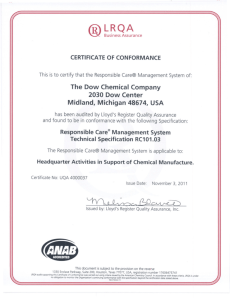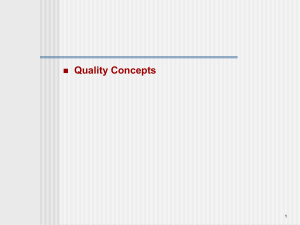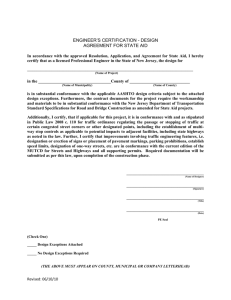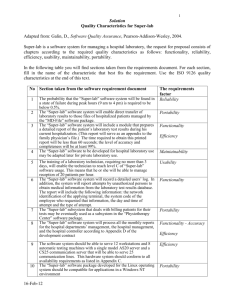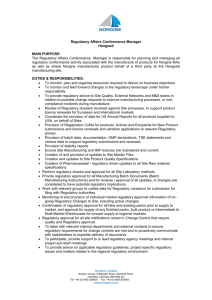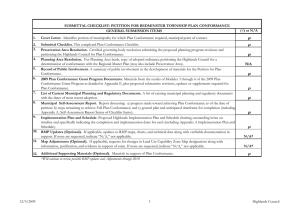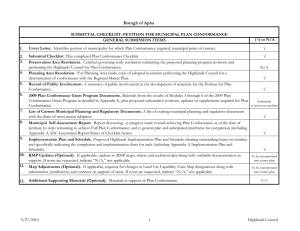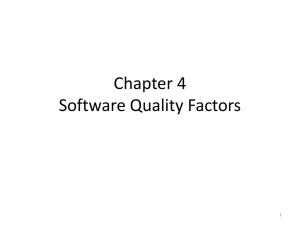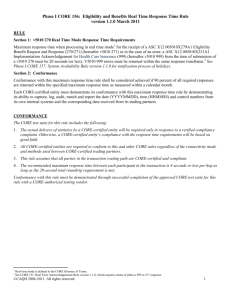Chapter 14 – Quality Concepts Overview This chapter provides an
advertisement
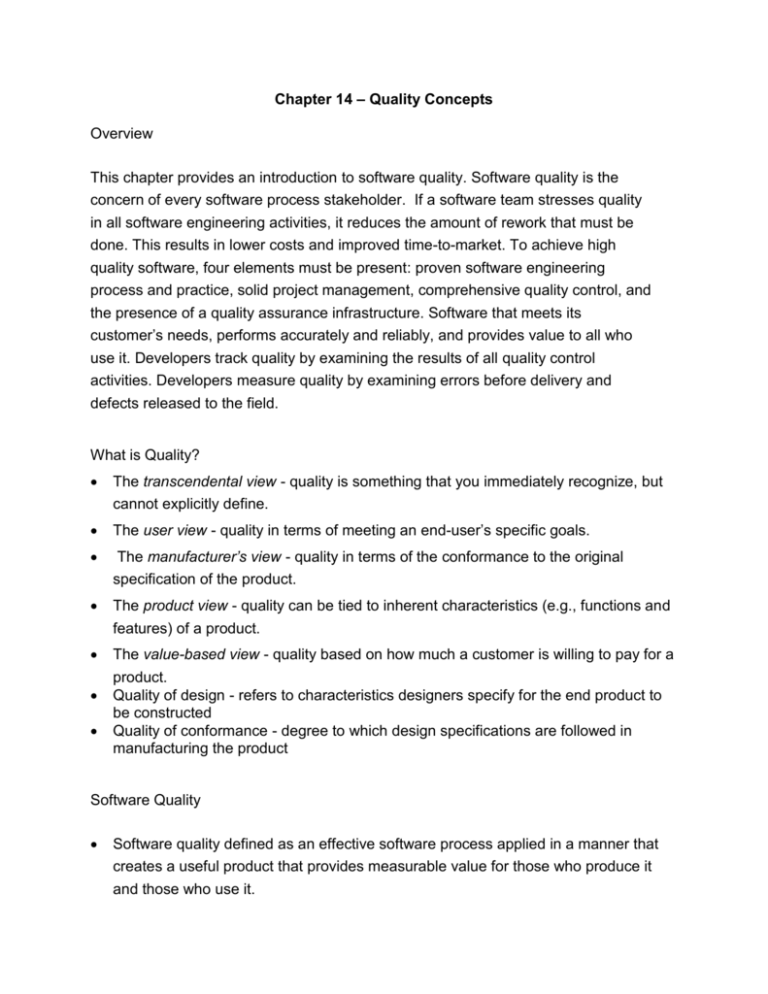
Chapter 14 – Quality Concepts Overview This chapter provides an introduction to software quality. Software quality is the concern of every software process stakeholder. If a software team stresses quality in all software engineering activities, it reduces the amount of rework that must be done. This results in lower costs and improved time-to-market. To achieve high quality software, four elements must be present: proven software engineering process and practice, solid project management, comprehensive quality control, and the presence of a quality assurance infrastructure. Software that meets its customer’s needs, performs accurately and reliably, and provides value to all who use it. Developers track quality by examining the results of all quality control activities. Developers measure quality by examining errors before delivery and defects released to the field. What is Quality? The transcendental view - quality is something that you immediately recognize, but cannot explicitly define. The user view - quality in terms of meeting an end-user’s specific goals. The manufacturer’s view - quality in terms of the conformance to the original specification of the product. The product view - quality can be tied to inherent characteristics (e.g., functions and features) of a product. The value-based view - quality based on how much a customer is willing to pay for a product. Quality of design - refers to characteristics designers specify for the end product to be constructed Quality of conformance - degree to which design specifications are followed in manufacturing the product Software Quality Software quality defined as an effective software process applied in a manner that creates a useful product that provides measurable value for those who produce it and those who use it. An effective software process establishes the infrastructure that supports any effort at building a high quality software product. A useful product delivers the content, functions, and features that the end-user desires, but as important, it delivers these assets in a reliable, error free way. By adding value for both the producer and user of a software product, high quality software provides benefits for the software organization and the end-user community. Garvin’s Quality Dimensions Performance quality Feature quality Reliability Conformance Durability Serviceability Aesthetics Perception McCall’s Quality Factors Correctness - extent to which a program satisfies its specification and fulfills the customer's mission objectives Reliability - extent to which a program can be expected to perform its intended function with required precision Efficiency - amount of computing resources and code required by a program to perform its function Integrity - extent to which access to software or data by unauthorized persons can be controlled Usability - effort required to learn, operate, prepare input for, and interpret output of a program Maintainability - effort required to locate and fix an error in a program Flexibility - effort required to modify an operational program Testability - effort required to test a program to ensure that it performs its intended function Portability - effort required to transfer the program from one hardware and/or software system environment to another Reusability - extent to which a program [or parts of a program] can be reused in other applications Interoperability. Effort required to couple one system to another ISO 9126 Quality Factors Functionality Reliability Usability Efficiency Maintainability Portability Measuring Quality General quality dimensions and factors are not adequate for assessing the quality of an application in concrete terms Project teams need to develop a set of targeted questions to assess the degree to which each quality factor has been satisfied in the application Subjective measures of software quality may be viewed as little more than personal opinion Software metrics represent indirect measures of some manifestation of quality and are an attempt to quantify the assessment of software quality Software Quality Dilemma If you produce software with terrible quality you lose because no one will but it If you spend infinite time and money to create software you lose because you will go out of business without bringing the software to market The trick is to balance the construction costs and the product quality Producing software using a “good enough” attitude may leave your production team exposed to serious liability issues resulting from product failures after release Developers need to realize the taking time to do things right mean that they don’t need to find the resources to do it over again Cost of Quality Prevention costs - quality planning, formal technical reviews, test equipment, training Appraisal costs - in-process and inter-process inspection, equipment calibration and maintenance, testing Internal failure costs - rework, repair, failure mode analysis External failure costs - complaint resolution, product return and replacement, help line support, warranty work Low Quality Software Low quality software increases risks for both developers and end-users Risks are areas of uncertainty in the development process such that if they occur may result in unwanted consequences or losses When systems are delivered late, fail to deliver functionality, and does not meet customer expectations litigation ensues Low quality software is easier to hack and can increase the security risks for the application once deployed A secure system cannot be built without focusing on quality (security, reliability, dependability) during the design phase Low quality software is liable to contain architectural flaws as well as implementation problems (bugs) Impact of Management Actions Estimation decisions – irrational delivery date estimates cause teams to take shortcuts that can lead to reduced product quality Scheduling decisions – failing to pay attention to task dependencies when creating the project schedule may force the project team to test modules without their subcomponents and quality may suffer Risk-oriented decisions – reacting to each crisis as it arises rather than building in mechanisms to monitor risks and having established contingency plans may result in products having reduced quality Achieving Software Quality Software quality is the result of good project management and solid engineering practice To build high quality software you must understand the problem to be solved and be capable of creating a quality design the conforms to the problem requirements Eliminating architectural flaws during design can improve quality Project management – project plan includes explicit techniques for quality and change management Quality control - series of inspections, reviews, and tests used to ensure conformance of a work product to its specifications Quality assurance - consists of the auditing and reporting procedures used to provide management with data needed to make proactive decisions
